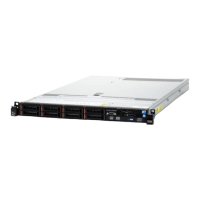TCP/IP Connectivity Utilities (5722-TC1)
556 iSeries Handbook
Transport Layer Security Support on iSeries (TSL)
Support for Transport Layer Security (TLS) is the latest protocol and the industry-standard
definition of Secure Sockets Layer (SSL) support.
The TLS protocol, is an evolutionary upgrade of the SSL Version 3.0 protocol. TLS Version 1
and SSL Version 3 share the same basic record construction and line flows. TLS provides the
same function as SSL and is compatible with SSL, but includes new features and
clarifications for protocol flows. TLS helps standardize the SSL definition and implementation,
making the SSL protocol more secure, and the specification of the protocol is more concise
and complete.
TLS support on the iSeries server allows customers and business partners continued access
to take advantage of the latest technology implementation of Internet application security
enablement in the industry. TLS support is automatically part of any SSL-enabled application,
like HTTP and TELNET servers. Parameter values on the SSL APIs enable TLS for business
partner and customer-provided SSL applications.
TCP/IP Packet Security
TCP/IP packet security selectively limits, or journals, network access to applications and
services. This security enables additional protection for iSeries servers that run sensitive
applications or act as Web servers. TCP/IP packet security helps protect an entire
subnetwork when the iSeries acts as a casual router.
Virtual Private Networks
iSeries virtual private networking support is based on industry standards that include:
• IP Security Protocol (IPSec)
• Internet Key Exchange (IKE)
• Layer 2 Tunneling Protocol (L2TP)
The iSeries virtual private network (VPN) solution applies to these environments:
• Intranets: Secure connections within an intranet
• Extranets or ValueNets: Secure connections between intranets of different
companies
• Remote office or branch office: Secure connections between intranets of the same
company
• Mobile workers: Secure connection from a mobile worker, using different Internet
Service Providers (ISPs) to an intranet

